Pulborough RFC - the progress of Nutbourne Nobblers!
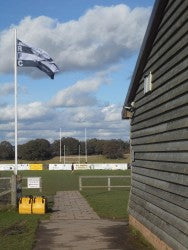 Pulborough Rugby Football Club, situated deep in rural West Sussex on the Sussex Downs, has transformed itself from what is, at heart, a village club into a well organised and efficiently functioning operation with a bright and financially sustainable future.
Pulborough Rugby Football Club, situated deep in rural West Sussex on the Sussex Downs, has transformed itself from what is, at heart, a village club into a well organised and efficiently functioning operation with a bright and financially sustainable future.
As sports governing bodies go, the Rugby Football Union (RFU) stands apart in terms of the scope of technical data and guidance it offers clubs of all sizes and budgets. It certainly proved a saviour for Pulborough. A £100,000 interest-free loan is something you'd rarely receive from a high street retail bank.
Pulborough is a classic example of what can be done by researching and applying the best funding avenues, locally and nationally, to galvanise the membership into active involvement in fundraising and linking up with local businesses to forge sponsorship deals and secure major donations.
The 1968/69 season was the first the club played under the guise of Pulborough Rugby Football Club, having begun life a year before under the ominously titled Nutbourne Nobblers.
Established by three groups of brothers, the Fanes, Masons and Fords, the club was born out of a desire to run a local club. "It was really a farming community with the usual mix of doctors, solicitors, accountants, and other professionals that were the norm in rural rugby communities such as ours," explains Chairman, Alex Steele.
A large swan adorns the west-facing side of the Nordic-styled clubhouse, where I've arranged to meet Alex and President Jim North - a symbol of the club that's remained since its inception, and a hark back to its first 'home', The Swan pub in Pulborough village, recently knocked down and replaced with a block of flats.
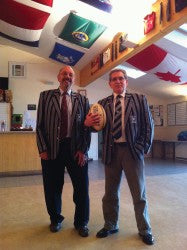 Following the move from The Swan, the fledgling club endured a nomadic few decades in search of an appropriate final resting place. Most of the temporary homes were pubs. The Five Bells in Pulborough was the next port of call in 1974, followed by the Red Lion, also in the village, then the Rising Sun at Nutbourne, before a five-year residency at the Black Horse in nearby Amberley.
Following the move from The Swan, the fledgling club endured a nomadic few decades in search of an appropriate final resting place. Most of the temporary homes were pubs. The Five Bells in Pulborough was the next port of call in 1974, followed by the Red Lion, also in the village, then the Rising Sun at Nutbourne, before a five-year residency at the Black Horse in nearby Amberley.
In 1982, the club moved to Pulborough Recreation ground, a site that was a better fit for its aspiring rugby retinue - sharing with football, cricket and the uniquely Sussex sport of Stoolball.
The reality of sharing was always untenable in the long term, so Alex, Jim and a small team of committed individuals embarked on, what would prove to be, a twenty-five year quest for a permanent home.
Following unsuccessful stints at Pythingdean and Nutbourne, suitable land was found at Stopham, east of Pulborough. This proved to be the most fruitful acquisition to date, and one requiring a change of use, but the committee was hindered by a number of issues beyond its control, and unable to progress further than the planning stages when the land was acquired by another purchaser.
With the Stopham project fallen by the wayside, the Club then considered a move to land at nearby and recently by-passed Billingshurst but, ultimately, failure to obtain Lottery funding made the cost of accommodating the rugby club alongside Billingshurst Football and Cricket Clubs unrealistic, plus it would have meant another shared facility and no independence and freedom to develop.
In 2003, a plot of land became available that ticked all the boxes. Once part of the sprawling Parham Park estate, the land was put up for sale by the owners, who were keen to shed some of their vast acreage.
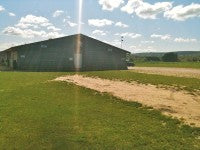 With Pulborough Gliding Club as neighbours, the club saw this 14-acre site as the ideal setting - one allowing the number of pitches and scope for future growth that the committee sought. With the bare bones in place, negotiations began in early 2004, with planning permission submitted to construct three new pitches, a clubhouse and limited parking.
With Pulborough Gliding Club as neighbours, the club saw this 14-acre site as the ideal setting - one allowing the number of pitches and scope for future growth that the committee sought. With the bare bones in place, negotiations began in early 2004, with planning permission submitted to construct three new pitches, a clubhouse and limited parking.
After such a long search, the planning and construction went through in just over twelve months and the new Swedish inspired, 4,000sq ft clubhouse officially opened in 2006.
"We really liked the Scandia Hus design, with the sloping roof and characterful Glulam wooden beams," explains Alex. "We looked around a number of clubhouses local to us to seek inspiration for our design. The planning process also constrained what we could do with the building," he continues. "It had to be a single storey construction and be sympathetic to the surroundings. The final barn-style appearance fitted the bill."
The exposed, often windy site might make a perfect setting for a gliding club, but Pulborough had to orientate the pitches so that play didn't interfere with the flight movements of, what are, costly pieces of kit.
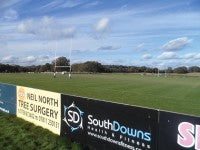 "The buffer strip between us and the gliding club runs in line with the Storrington oil field, so we were required to position our third pitch further from the clubhouse than we would have liked," says Jim, peering into the distance at the playing area.
"The buffer strip between us and the gliding club runs in line with the Storrington oil field, so we were required to position our third pitch further from the clubhouse than we would have liked," says Jim, peering into the distance at the playing area.
"Our future plans could include the purchase an extra one and a half acres, then build a fourth pitch, as we're pretty much up to capacity now. We've acquired one of the loveliest spots in Sussex, with stunning views along the South Downs, so it's important that nothing spoils that."
Pulborough had agreed a lease with the Parham Estate, with an option to purchase, which the club took up in 2009, creating a lasting rugby legacy for the village for generations to come.
Projects often flounder because of the welter of planning red tape. In successful examples, like this one, you'll usually find a committed army of members working tirelessly behind the scenes. Pulborough were fortunate in that they were able to raise a game-changing sum of money through member donations, which accounted for more than half of the total cost of £500,000. The proximity to two landfill sites also made Pulborough eligible for other funding opportunities, and the club received two substantial sums from both Viridor and Biffa waste management companies. Horsham District Council were very supportive, both financially and through the planning process and, with significant assistance from Nissan UK and Young's Brewery, the necessary funding was secured.
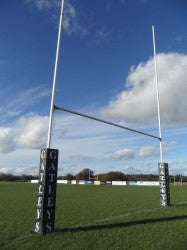 The committee also took advantage of wider national schemes and locally run initiatives. Besides the £100,000 maximum interest-free loan from the RFU, Pulborough tapped into grant-aid from the Sussex County Playing Fields Association, whose remit is to encourage recreation in East and West Sussex in cooperation with local authorities.
The committee also took advantage of wider national schemes and locally run initiatives. Besides the £100,000 maximum interest-free loan from the RFU, Pulborough tapped into grant-aid from the Sussex County Playing Fields Association, whose remit is to encourage recreation in East and West Sussex in cooperation with local authorities.
Timing for the development proved crucial. Alex and Jim freely admit that they were fortunate to be in the right place at the right time, as the project went through at the peak of Britain's economic boom, before the banking crisis, credit crunch and recession hit the country.
"We were riding the crest of the wave, so were able to gain access to money that we would likely not have benefitted from had we begun the process just a year later," Jim explains.
The preparatory earthworks began in earnest in July, with competitive play kicking off as the 2006/7 season dawned that September. The land was far from fit-for-purpose for sporting use, as the rolling terrain required levelling ready for the three full-sized rugby pitches to be laid - an unenviable undertaking.
The club is fortunate, indeed, in being able to draw on the varying expertise of its membership, many of whom are only too willing to work for the good of the club in their spare time.
When it comes to grounds maintenance, things are no different. Kevin Church is the man charged with everything turf based, and he's able to juggle the requirements at the club with his own day job. "I've been affiliated with the club for seventeen years, since I began coaching my eldest son's team from the age of six," he explains. His role as Farm Manager for locally-based Harwoods allows him to take care of grounds and pitch maintenance.
Today, Harwoods is best known locally as a 4x4 dealership, but the regionally successful enterprise also has roots in horse racing and farming. The company's portfolio includes a 2,000-acre arable farm and 200-acre racehorse training area.
 Harwoods achieved world renown in the 1980s and '90s for training thoroughbred horses, with current owner Guy Harwood moving away from garages into horseracing nearly forty years ago.
Harwoods achieved world renown in the 1980s and '90s for training thoroughbred horses, with current owner Guy Harwood moving away from garages into horseracing nearly forty years ago.
Today, his daughter and son-in-law - Amanda and Mark Perrett - own the racing licence, whilst the focus for Kevin's boss has returned to its motoring origins, and twelve Harwoods centres line the south coast.
The free reign allowed to Kevin gives him the independence to devote time to Pulborough when he can fit it around his daily schedule. "It's nice to work with such a wide range of facilities, offering different challenges," he explains. "We are more than just a farm and, on the equestrian side, we have some renowned riders training here. Two recent Olympians both currently train at the Harwoods site."
It was at the tail-end of Pulborough's tenure at their old venue that Kevin began his involvement with pitch maintenance. "I'm from a self-taught agricultural background really, so I learned a lot on the job but, when planning was going through, I told the committee that I'd be willing to get involved with the construction and ongoing maintenance of the new pitches. As it turned out, my role was more at the back end of things - seeding the pitches and the establishment stage."
In our world of highly specialised sports turf preparation, it might cause some to raise an eyebrow at Kevin's agricultural approach to what is fast becoming a science-based sector, but Pulborough's pitches have not suffered from his agricultural skills - in fact, quite the reverse.
 "I'm by no means an amenity specialist, so I have to do my best with what I know and make use of local agronomists to help out with certain elements," he explains.
"I'm by no means an amenity specialist, so I have to do my best with what I know and make use of local agronomists to help out with certain elements," he explains.
"At this time of year we don't get down to the club as much - there's little need to cut as growth is minimal." He treats the pitches "just like any other field".
"We aerated this October, but it's usually a matter of doing things on an ad hoc basis."
The return of spring signals the start of more intensive work. "We'll usually give a light spray and cut twice a week. I apply the same fertiliser here that I do in my day job," he continues.
"If there's anything I'm unsure of, I'll liaise with agricultural agronomist, Keith Charmon. We had a fairy ring issue recently, so I went to him and was able to remedy the problem. We also use the services of Rob Jochobsen, an independent sportsturf contractor, for any specialist tasks, for example direct drilling of grass seed and aeration.
The same principles are applied when seeding. Kevin uses a predominantly ryegrass mix, which he sources from a local agricultural grain merchant. "Ryegrass is hardy and establishes quickly, which is why we also use it on gallops. Likewise, with the fertilisers, we tend to apply fibrefloss, which is basically a dust compound fertiliser. We have no qualms about how 'agricultural' it may be. If it works, that's good enough for us."
 "We've spread compost before," he reveals. "It doesn't smell great, but it does the business. We have naturally very good soil and drainage here, so it makes things easier."
"We've spread compost before," he reveals. "It doesn't smell great, but it does the business. We have naturally very good soil and drainage here, so it makes things easier."
Life wasn't always so sweet, though, and the process of turning what was, essentially, just a field into free draining sports pitches was pockmarked with problems. "Our Downs location means the surface is naturally quite flinty, and this became an issue when the pitches first had to be levelled," says Kevin. "We were fortunate that, through our relationship with the RFU, we were able to source the support and guidance of Keith Kent, Head Groundsman at Twickenham. He was a great source of knowledge."
Whilst flint has long been present in the ground, it only showed itself once the soil was disturbed by the levelling process. "It takes a good four years to get the natural soil properties back, so drainage was never going to be perfect in the first year after," he explains. "We've applied much more grass seed since then, as the root structure helps to keep the flint buried. The pitches are quite sandy now as well, so we have extremely well draining playing surfaces."
Pulborough has had precious few issues with flint on the first and second pitch since then, but the third posed more of a problem. Kevin was forced to bring in a stone burier to bury lots of the disturbed flint, which proved just the job. "We managed a 70% success rate and now there's no concern with stone coming through," he says. "We also brought in a self-propelled Grasshopper - it made a huge difference. There was nothing delicate about the job, and our access to agricultural machinery was helpful as it would have cost a lot to contract in these machines."
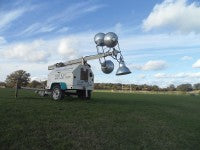 The cost to establish the turf and level all three pitches was much less than expected, as much of the work was carried out by members. The only real expense was the grass seed, and the club has now reached the stage where it can continue to reduce cut height year on year. "We'll stick to applying a bit of nitrogen and fibrefloss and let it tick over. We spread a bit of sewage cake last year. That does wonders," Kevin enthuses.
The cost to establish the turf and level all three pitches was much less than expected, as much of the work was carried out by members. The only real expense was the grass seed, and the club has now reached the stage where it can continue to reduce cut height year on year. "We'll stick to applying a bit of nitrogen and fibrefloss and let it tick over. We spread a bit of sewage cake last year. That does wonders," Kevin enthuses.
Keeping the levels true will prove a long-term challenge for the club but, if he had his way, Kevin would revert to some truly traditional practices. "If I could, I'd pen off the pitch and stick a hundred sheep in there," he insists. "Nothing keeps the levels true like sheep. We do it frequently with the racecourse, and it works wonderfully. I'm in no doubt that some rural clubs, who don't have the levels of fixtures we do, already use them."
"The trouble here is that there's never a big enough gap to make it work. Rugby is played throughout the autumn, winter and spring, and summer is occupied with training and seasonal events, so it just wouldn't be feasible."
Some may be open-mouthed at the prospect of sheep running riot over their perfectly manicured playing surfaces but, since the 1st XV have joined the London South East league, Pulborough have received nothing but compliments about the quality of surface, so Kevin's farming background hasn't hindered progress.
"It is not unrealistic to say we have the best drainage of any sports pitch in the area. We're always one of the last to have fixtures cancelled. Often, when the land on the perimeter is sodden, the pitches are perfectly playable."
Whilst Pulborough are in the fortunate position that they can make use of Harwood's fleet of machines, including a 24-metre Bateman agricultural sprayer, they do have a mower of their own, purchased at the start of construction. A Jacobsen front mounted mower handles most of the duties, and Kevin is fortunate that he can share the workload with colleague Ian Crouch - agricultural engineer at Harwoods - who takes over the summer mowing duties from Kevin, who is, understandably, jam-packed through the summer months with his own agricultural tasks.
Ian also takes care of all maintenance and repairs, so no cost is incurred if faults are discovered or parts needed. Kevin's work is proof that amenity and agricultural practices can successfully overlap and bring good results to boot.
The rugby club runs three senior XVs, the 1st XV newly promoted to London and South East League 3, whilst the 2nd XV plays in the Sussex West 2 and the 3rd XV 'plough their furrow' in Sussex West 3.
The club also enjoys a vibrant 400-strong Junior section membership with mini and youth rugby from U7 to U18 represented in local leagues. The girls contingent is growing too, with three teams that currently stride out, attracting players from as far as Worthing on the south coast to compete in competitive fixtures.
Proof of their success with youth development is the club's newly forged links with Harlequins. Pulborough is now an official satellite club, with the Premiership outfit running popular training clinics in the summer for the last few years - another feather in the cap.
The potential for revenue generation from fine clubhouse facilities can be significant and, in this climate, extra income is always welcome. For Jim and Alex, though, it's about more than just money. "We do hire out facilities, and the clubhouse is popular for weddings and birthdays, as well as wakes, but we insist that only members can hire it," says Jim. "Too much love, money and effort has gone into getting to where we are now. We wouldn't want to jeopardise that by extending the use of the clubhouse to non-members who might not share the same sense of ownership and pride."
Kevin has a "healthy" four-figure annual maintenance budget to work with, but that is largely for purchasing turfcare materials - machine hire and renovations are mainly sponsored through the generosity of Harwoods.
Each of the three pitches cost £32,000, and nearly a fifth of the total overall sum was set aside for renovations and landscaping.
Despite the project progressing at the peak of the economic cycle, the committee displayed some excellent examples of how to do things right, gaining access to as many funding avenues as possible by sourcing national, local and niche sectors.
Jim offers a few words of warning to any prospective clubs. "The Biffa and Viridor grants were a vital source of revenue for us, but there was a lot of paperwork involved. You need to have an active membership, willing to help out wherever it can," he cautions.
"We were fortunate that one of our members had actually studied this side of the legal process, so we were able to make more sense of it," Jim continues. "Also, once the money has been granted, the process doesn't stop there. All grants are monitored and managed by Entrust, so you have to continue to justify what the money is being spent on."
With over half a century of club affiliation between them, Alex and Jim share a passion for the cause that prevented the disappointments and drawn-out planning processes from dampening spirits. "We have been a part of this club for a long time, and we're very proud that, under our stewardship, we've got to where we are now," says Alex.
The upward progression by the 1st XV to the South East leagues has been a major triumph for the village club, and the vision now is to consolidate that position and then continue this progression up the sporting ladder.
Hopes of reaching the heights of the league were given an added boost this season as, for the first time, the club now employs qualified coaches. The Head Coach, a Kiwi, Clayton Saunders and Assistant Coach, Sam Goatcher, joined the team in September to coach the Seniors and Colts on Tuesday and Thursday evenings, as well as on Saturdays.
"The Coaches are proving to be excellent additions to the Pulborough cause," says Alex. "Clay sees the work with us as part of his coaching career development and Sam decided he had more long term potential as a coach than a player. Their personalities, drive, honesty and pragmatism fit well with our ethos."
Jim adds: "There are no prima donnas here. If anyone rises above their station they will soon be brought back down to earth."
As a Community Amateur Sports Club (CASC) the Club enjoys the benefit of the CASC system whereby some members have access to a 'Gift Aid' like process which is an important source of unexpected, but welcome revenue.
The Colts are the lifeblood of Pulborough, and transition through the various age groups is an important facet of club operations. This season so far eighteen former Colts have been represented in the three senior sides, six playing in the first team, which is no mean feat, especially as when players reach university age and tend to drift away. Pulborough has also brought through some high profile names, most notably USA international, Jesse James Coulson, and current England Senior squad member Billy Twelvetrees, whose father, believe it or not, is a tree surgeon by trade.
"The 17-21 age bracket is the most challenging for all sports," Alex stresses. "It is the time when they start college and university and develop different interests. If we can hold on to as many as we can through these years, it's a bonus. We can only pray that our lads are educationally challenged," he jokes.
The ties with New Zealand rugby has also been an enriching one for Pulborough. A few young, aspiring Kiwis have travelled to Pulborough over the years mainly to work locally but armed with only a "toothbrush and a pair of boots", but the club had the good fortune of meeting two of the most high profile players in international rugby, when the All Blacks were last on tour in the UK.
"Dan Carter and Richie McCaw have personal contacts with one of our VP's who got them to come down and say hello to a packed Clubhouse," recalls Jim. "It was a great evening; they answered questions for an hour, and were so good natured, even when one of the Colts asked why they 'always bottle World Cup finals'. They said they'd both started their rugby careers as youngsters in small friendly clubs just like ours, which was a great inspiration to all the players in attendance."
In under a decade, Pulborough Rugby Football Club has managed to acquire a significant plot of land, gain planning permission, raise half a million pounds and continue to build on a strong membership, as well as bringing on board qualified staff to move the standard of rugby forward.
Despite all this, Alex and Jim are happy with their status as a "modest village club", and are fully content with their steady progress, whilst their long spell of dedicatedly hard work could eventually reap far richer rewards.
